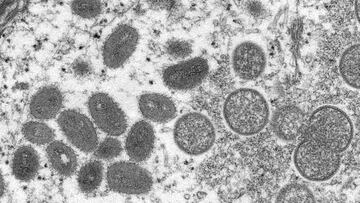Monkeypox: What is it? Is it deadly? Is it easy to catch?
The WHO declares monkeypox a global emergency after cases have spread rapidly to thirteen countries.


The World Health Organization announced on Wednesday, August 14, that the rapid spread of monkeypox to thirteen countries represented a global emergency. The wave has yet to grow to the peaks seen in 2022, but the health experts tracking the spread fear that they could reach those if the crisis is not addressed.
Today, the Emergency Committee on #mpox met and advised me that in its view, the situation constitutes a public health emergency of international concern. I have accepted that advice.@WHO is on the ground, working with the affected countries, and others at risk, through our…
— Tedros Adhanom Ghebreyesus (@DrTedros) August 14, 2024
The case numbers in the Democratic Republic of the Congo are rising rapidly, and cases have spread across the region, increasing the risk of the virus being transported internationally. In response, the organization’s Secretary-General, Tedros Adhanom Ghebreyesus, said that the need to stop the outbreaks before they spread even further for “a coordinated international response.”
What is it?
Monkeypox is a virus, and though it shares certain symptoms with the coronavirus that causes COVID-19, there is one key distinction: the patient will present with a rash.
Usually, symptoms are gone within four weeks and include fever and what the WHO calls an “extensive characteristic rash,” as well as “usually swollen lymph nodes.”
Is it deadly?
The WHO reports that the fatality rate is anywhere between zero and 11 percent, with some strains killing 1 percent of those infected, and another taking the lives of 10 percent. Unlike COVID-19, children are much more vulnerable to the virus.
Is it easy to catch?
It is possible to contract monkeypox from a person, though it was thought to be quite difficult to do so. It is far more common to catch monkeypox from an infected animal. This is usually through a bite or touching its bodily fluids.
Related stories
Between humans, it is possible to contract the virus through:
- touching clothing, bedding or towels used by someone with the monkeypox rash
- touching monkeypox skin blisters or scabs
- the coughs or sneezes of a person with the monkeypox rash
Though not a sexually transmitted disease, the virus has been linked to such viruses because it can be transmitted through touch.

Complete your personal details to comment